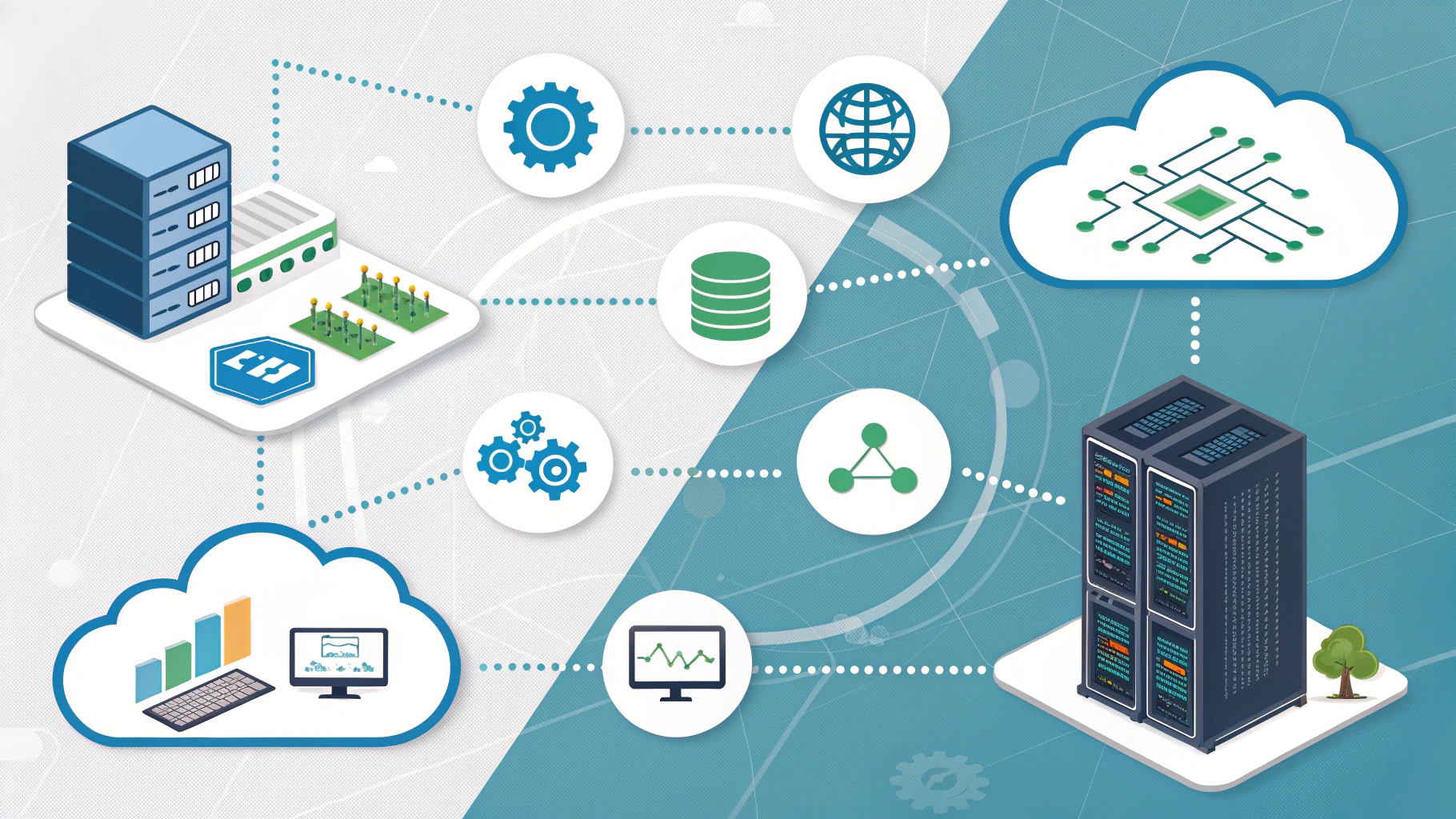
Summary
Cloud computing has transformed the way we store, access, and manage data. In this blog, we explored what cloud computing is, how it works, and why it has become a cornerstone of modern technology. With cloud service models like IaaS, PaaS, and SaaS, businesses and individuals can choose solutions tailored to their needs. We also compared AWS vs Azure, the two leading cloud providers, and explained the role of cloud storage in data accessibility and backup.
The blog highlights key features, benefits, and security concerns related to the cloud, making it a comprehensive guide for anyone looking to understand the topic. Whether you’re an individual user or a growing business, adopting cloud solutions can help you scale efficiently, reduce costs, and stay competitive.
In today’s digital-first world, cloud computing has revolutionized how businesses and individuals use technology. From backing up photos on your smartphone to running enterprise-level applications, cloud computing plays a central role. But what exactly is it? This guide will break it down in simple terms, compare major platforms like AWS vs Azure, and explain how cloud storage fits into the bigger picture.
What is Cloud Computing?
Cloud computing simply refers to delivering computing services—like storage, servers, databases, networking, software, and analytics—over the internet (“the cloud”). Instead of storing data or running programs on your local computer or in-house servers, cloud computing enables you to do it remotely via service providers.
These services are typically offered on a pay-as-you-go model, which means you only pay for what you use. It’s cost-effective, scalable, and convenient.
Key Characteristics of Cloud Computing
Understanding cloud computing becomes easier when you break down its core characteristics:
- On-Demand Self-Service: Users can access computing resources as needed without human interaction.
- Broad Network Access: Services are available over the internet and accessible through various devices.
- Resource Pooling: Multiple users share resources without impacting each other’s data or performance.
- Rapid Elasticity: Resources can be scaled up or down based on demand.
- Measured Service: Usage is monitored and users are billed accordingly.
Types of Cloud Deployment
There are three main types of cloud environments:
- Public Cloud: Owned by third-party providers like AWS, Azure, or Google Cloud.
- Private Cloud: Exclusively used by one organization, often hosted on-premises.
- Hybrid Cloud: A mix of public and private clouds to allow data and app portability.
Cloud Service Models
Cloud computing is delivered through different service models:
- IaaS (Infrastructure as a Service): Offers virtualized computing resources over the internet.
Example: AWS EC2, Microsoft Azure Virtual Machines - PaaS (Platform as a Service): Provides a platform for developers to build and deploy applications.
Example: Google App Engine, Azure App Services - SaaS (Software as a Service): Delivers software applications over the internet.
Example: Google Workspace, Microsoft 365
Cloud Storage Explained
One of the most commonly used cloud services is cloud storage. It allows users to save files online so they can be accessed from any device, anywhere. Services like Google Drive, Dropbox, and OneDrive are popular for personal use, while Amazon S3 and Azure Blob Storage are commonly used for enterprise needs.
Benefits of Cloud Storage:
- Accessibility from any location
- Data backup and disaster recovery
- Scalable storage capacity
- Collaboration and file sharing
AWS vs Azure: A Quick Comparison
When it comes to cloud platforms, Amazon Web Services (AWS) and Microsoft Azure lead the market. Here’s how they compare:
| Feature | AWS | Azure |
| Market Share | ~32% | ~23% |
| Launch Year | 2006 | 2010 |
| Strengths | Mature ecosystem, flexibility | Deep Microsoft integration |
| Pricing | Pay-as-you-go, spot instances | Competitive, hybrid-friendly |
| Best For | Startups, enterprises | Enterprises, Microsoft users |
Both AWS and Azure offer similar IaaS, PaaS, and SaaS capabilities, but choosing the right one depends on your organization’s needs, budget, and tech stack.
Is Cloud Computing Secure?
Security is a top concern when discussing cloud computing. The good news is that leading cloud providers invest heavily in data encryption, firewalls, identity management, and compliance standards (like GDPR, HIPAA, etc.).
However, users must also follow best practices such as:
- Using strong authentication
- Regular data backups
- Monitoring account activity
- Implementing role-based access
Why Businesses Are Moving to the Cloud
Businesses are rapidly adopting cloud computing due to:
- Cost Savings: No need for expensive hardware or IT staff
- Scalability: Easily increase/decrease resources
- Speed: Faster deployment of apps and services
- Innovation: Access to cutting-edge tools like AI, ML, and analytics
Recommended Resource
To dive deeper into this topic, check out this in-depth comparison by TechRadar:
AWS vs Azure: An In-Depth Comparison of the Two Leading Cloud Platforms
Final Thoughts
Understanding cloud computing explained means understanding the shift from traditional IT to a more flexible, scalable, and efficient model. Whether you’re an individual exploring cloud storage or a business comparing AWS vs Azure, the cloud offers countless benefits worth exploring.
Cloud computing isn’t the future—it’s the present. The sooner you embrace it, the better positioned you’ll be in this ever-evolving digital world.
Related Read:
If you’re considering a career in cloud computing or planning to get certified in platforms like AWS or Azure, you might want to explore our detailed guide on Best IT Certifications for Career Growth in 2025. It covers top certifications that can give you a competitive edge in today’s cloud-driven tech landscape.
Frequently Asked Questions (FAQ)
1. What is cloud computing in simple terms?
Cloud computing is the delivery of computing services like storage, servers, and software over the internet. It allows users to access and store data remotely rather than using physical hardware or local servers.
2. What are the benefits of cloud computing?
Some key benefits include:
- Cost efficiency
- Scalability
- Accessibility from anywhere
- Enhanced collaboration
- Security and disaster recovery
3. What is the difference between AWS and Azure?
AWS (Amazon Web Services) and Azure (Microsoft Azure) are top cloud service providers. AWS offers a broader range of services and global infrastructure, while Azure is preferred for its deep integration with Microsoft products.
4. What is cloud storage?
Cloud storage is a service that allows you to store data on remote servers accessible via the internet. Examples include Google Drive, Dropbox, Amazon S3, and Azure Blob Storage.
5. Is cloud computing secure?
Yes, cloud computing can be secure if best practices are followed. Top providers implement strong security measures like encryption, multi-factor authentication, and compliance protocols. However, users must also maintain good security hygiene.
6. What are the main types of cloud deployment?
There are three main types:
- Public cloud (e.g., AWS, Azure)
- Private cloud (dedicated infrastructure for one organization)
- Hybrid cloud (a mix of public and private)
7. Who uses cloud computing?
Everyone from individuals to large enterprises uses cloud computing—for photo backups, email services, app hosting, data analytics, and more.







